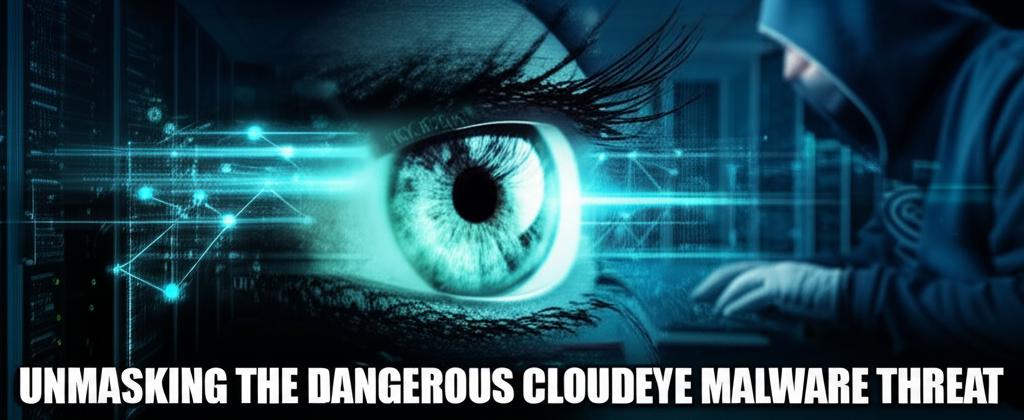Unmasking the Dangerous CloudEyE Malware Threat
In the evolving landscape of cyber threats, new and sophisticated malware strains constantly emerge, posing significant risks to individuals and organizations alike. One such insidious threat that has drawn attention from cybersecurity researchers is CloudEyE Malware. This advanced piece of malicious software is designed to operate stealthily, often as an information stealer, and has been linked to various cybercriminal activities. Understanding its nature, operational tactics, and prevention methods is crucial for robust digital defense.
What Exactly is CloudEyE Malware?
CloudEyE Malware is a sophisticated Trojan, primarily functioning as an information stealer. It’s not a single, static entity but rather a modular and evolving threat, often sold or leased on underground forums, making it accessible to various threat actors. Its primary objective is to exfiltrate sensitive data from compromised systems, ranging from login credentials and financial information to personal documents and intellectual property. The versatility of CloudEyE Malware allows its operators to customize its functionalities based on their specific malicious goals.
How Does CloudEyE Malware Operate?
The operational mechanics of CloudEyE Malware are designed for stealth and persistence. Here’s a typical breakdown of its attack chain:
- Initial Compromise: CloudEyE often propagates through common vectors such as:
- Phishing Emails: Luring victims with deceptive emails containing malicious attachments (e.g., infected documents, executables) or links to compromised websites.
- Malvertising: Exploiting vulnerabilities in web browsers or plugins through malicious advertisements.
- Software Bundles: Hidden within legitimate-looking software installers, often from unofficial sources.
- Exploit Kits: Leveraging known software vulnerabilities to silently install the malware.
- Installation and Persistence: Once executed, CloudEyE Malware works to establish a foothold on the system. It may modify system registries, create scheduled tasks, or inject itself into legitimate processes to ensure it restarts with the system and remains undetected by basic security tools.
- Information Gathering: The malware then begins its primary task: collecting data. This can include browsing history, keystrokes (keylogging), screenshots, saved credentials from browsers and applications, financial data, and other sensitive files.
- Command and Control (C2) Communication: Exfiltrated data is typically sent to a C2 server controlled by the attackers. CloudEyE often employs encrypted communication channels and can use various techniques to evade network monitoring.
- Modular Capabilities: Depending on the variant, CloudEyE Malware might also download additional modules, enabling capabilities like remote access, cryptocurrency mining, or even deploying other malware (e.g., ransomware).
The Grave Dangers Posed by CloudEyE Malware
The impact of a CloudEyE Malware infection can be severe:
- Data Breach: The most immediate danger is the theft of sensitive personal and corporate data, leading to identity theft, financial fraud, or espionage.
- Financial Loss: Compromised banking credentials, credit card details, or cryptocurrency wallets can result in significant financial losses.
- Reputational Damage: For businesses, a data breach resulting from CloudEyE Malware can severely damage trust and reputation.
- Further Infections: Its modular nature means it can act as a gateway for other, even more destructive, malware.
- Loss of Control: In some cases, operators may gain remote control over the compromised system.
Detection and Prevention Strategies
Protecting against CloudEyE Malware requires a multi-layered approach:
Proactive Prevention:
- Strong Email Security: Be wary of suspicious emails, especially those with unexpected attachments or links. Verify senders before clicking.
- Regular Software Updates: Keep operating systems, browsers, and all software patched and up-to-date to fix known vulnerabilities that malware might exploit.
- Robust Antivirus/Endpoint Protection: Utilize reputable antivirus and endpoint detection and response (EDR) solutions with real-time scanning capabilities.
- Firewall Protection: Configure firewalls to monitor and restrict unauthorized network traffic, especially outgoing connections to known C2 servers.
- User Education: Train employees and individuals about the common tactics used in phishing and social engineering attacks.
- Strong Passwords and MFA: Use unique, strong passwords for all accounts and enable multi-factor authentication (MFA) wherever possible.
- Backup Data: Regularly back up critical data to a secure, offline location.
Detection and Response:
- Network Monitoring: Look for unusual outbound connections or high data transfer rates.
- System Auditing: Regularly check system logs for suspicious activities or unauthorized changes.
- Behavioral Analysis: Advanced security tools can detect unusual process behavior indicative of malware.
- Incident Response Plan: Have a clear plan in place for how to respond if an infection is detected.
Conclusion
CloudEyE Malware represents a significant and adaptable threat in the cyber underworld. Its ability to silently steal crucial information underscores the importance of vigilance and comprehensive cybersecurity measures. By staying informed, implementing robust security practices, and fostering a culture of cybersecurity awareness, individuals and organizations can significantly reduce their risk of falling victim to this dangerous information stealer and other similar threats.







